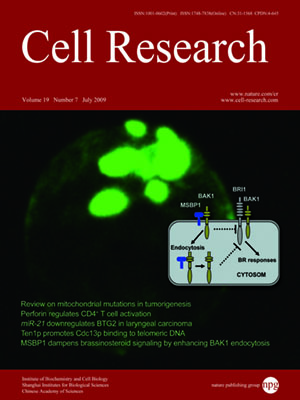Volume 19 Issue 7, July 2009: 887-898
ORIGINAL ARTICLES
Magnesium transporter AtMGT9 is essential for pollen development in Arabidopsis
Jian Chen1,*, Le-gong Li2,*, Zhen-hua Liu1, Yu-ju Yuan1, Li-lin Guo1, Dan-dan Mao1, Lian-fu Tian1, Liang-bi Chen1, Sheng Luan1,3 and Dong-ping Li1
1College of Life Science, Hunan Normal University, Changsha 410081, China
2College of Life Science, Capital Normal University, Beijing 100037, China
3Department of Plant and Microbial Biology, University of California, Berkeley, CA 94720,USA
Correspondence: Dong-ping Li, Sheng Luan,(dongbing_lee@yahoo.com.cn; sluan@nature.berkeley.edu)
Magnesium (Mg
2+) is abundant in plant cells and plays a critical role in many physiological processes. A 10-member gene family
AtMGT (also known as
AtMRS2) was identified in
Arabidopsis, which belongs to a eukaryote subset of the CorA superfamily, functioning as Mg
2+ transporters. Some family members (AtMGT1 and AtMGT10) function as high-affinity Mg
2+ transporter and could complement bacterial mutant or yeast mutant lacking Mg
2+ transport capability. Here we report an AtMGT family member, AtMGT9, that functions as a low-affinity Mg
2+ transporter, and is essential for pollen development. The functional complementation assay in
Salmonella mutant strain MM281 showed that AtMGT9 is capable of mediating Mg
2+ uptake in the sub-millimolar range of Mg
2+. The
AtMGT9 gene was expressed most strongly in mature anthers and was also detectable in vascular tissues of the leaves, and in young roots. Disruption of
AtMGT9 gene expression resulted in abortion of half of the mature pollen grains in heterozygous mutant +/
mgt9, and no homozygous mutant plant was obtained in the progeny of selfed +/
mgt9 plants. Transgenic plants expressing AtMGT9 in these heterozygous plants can recover the pollen phenotype to the wild type. In addition,
AtMGT9 RNAi transgenic plants also showed similar abortive pollen phenotype to mutant +/
mgt9. Together, our results demonstrate that AtMGT9 functions as a low-affinity Mg
2+ transporter that plays a crucial role in male gametophyte development and male fertility.
Magnesium (Mg2+) is abundant in plant cells and plays a critical role in many physiological processes. A 10-member gene family AtMGT (also known as AtMRS2) was identified in Arabidopsis, which belongs to a eukaryote subset
FULL TEXT | PDF
Browse 1896


